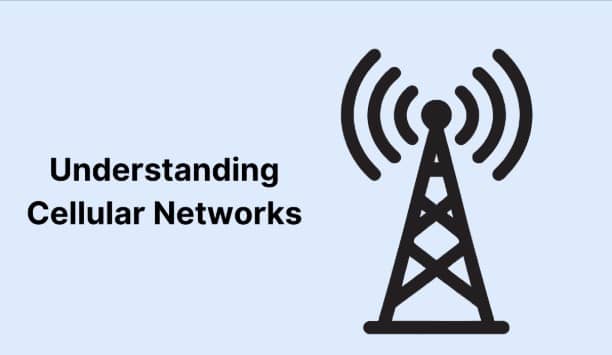Understanding Cellular Networks: Everything You Need to Know
Introduction
Cellular networks are the invisible backbone of modern communication, enabling billions of people around the world to make calls, send messages, and access the internet from virtually anywhere. From smartphones and tablets to smartwatches and connected cars, cellular technology plays a vital role in how we live, work, and connect. But despite their everyday use, many people don’t fully understand how these networks actually work—or how they’ve evolved over time.
In this guide, we’ll break down everything you need to know about cellular networks, from their basic structure and components to the different generations of technology like 4G and 5G. Whether you’re curious about how your phone gets a signal or you’re exploring the future of mobile communication, this article will give you a clear and comprehensive understanding of cellular networks and why they matter more than ever in today’s connected world.
What Are Cellular Networks?
Cellular networks are wireless communication systems that divide geographic areas into smaller sections called “cells,” each served by a base station or cell tower. These cells work together to provide seamless coverage, allowing mobile devices to stay connected while moving between locations. Unlike Wi-Fi, which relies on local routers, cellular networks use large-scale infrastructure to support wide-area communication. This makes them ideal for mobile phone usage, remote communication, and even supporting smart devices in cars and homes.
History and Evolution of Cellular Networks
The history of cellular networks began with the launch of 1G in the 1980s, offering analog voice communication. Since then, each generation—2G, 3G, 4G, and now 5G—has introduced major advancements in speed, reliability, and functionality. From simple voice calls to high-speed internet and real-time video streaming, the evolution of mobile networks has transformed the way people connect and communicate, laying the groundwork for future technologies like 6G and the Internet of Things (IoT).
How Cellular Networks Work
Cellular networks function by using a series of base stations—commonly known as cell towers—that divide service areas into overlapping “cells.” Each tower connects to mobile devices within its range and communicates with a core network that routes voice, data, and messaging. As users move, their connection is seamlessly handed off from one tower to another through a process called “handover.” These networks rely on licensed radio frequencies to transmit signals, ensuring consistent connectivity across large regions, even while users are in motion.
Types of Cellular Network Technologies
Cellular technology has evolved through various generations, each offering new capabilities. 2G introduced digital voice and SMS; 3G brought mobile internet; 4G enabled fast data for streaming and downloads; and 5G delivers ultra-low latency and lightning-fast speeds, supporting smart cities and autonomous tech. Each generation improves speed, bandwidth, and reliability, meeting the growing demands of modern mobile users. These technologies coexist today, ensuring compatibility and coverage for a wide range of devices and use cases.
Key Components of a Cellular Network
A cellular network is made up of several essential components working together. These include mobile devices, base stations (cell towers), and the Mobile Switching Center (MSC), which routes calls and data. The core network manages connectivity between mobile users and external networks like the internet. Backhaul infrastructure connects cell towers to the core. Each part plays a vital role in ensuring seamless communication, data transfer, and connectivity across wide geographic areas.
Cellular Network Coverage and Signal Strength
Coverage and signal strength vary based on location, infrastructure, and environmental factors. Dense urban areas typically have strong coverage due to closely spaced towers, while rural or remote regions may experience weak signals or dead zones. Obstacles like buildings, trees, and weather conditions can interfere with signal quality. Signal strength is measured in dBm, and understanding it can help users troubleshoot connectivity issues or improve performance using signal boosters or network extenders.
The Role of SIM Cards and Network Authentication
SIM cards (Subscriber Identity Modules) are tiny chips that store user identity and network credentials. They enable devices to connect to a carrier’s network securely. When a phone connects, the network authenticates the SIM card, ensuring only authorized users gain access. SIMs also store contact information and allow for roaming, letting users stay connected when traveling across different networks or countries.
Mobile Network Operators and Carriers
Mobile network operators (MNOs) own and maintain the infrastructure for cellular service, while mobile virtual network operators (MVNOs) lease access and resell it under their brand. Carriers provide voice, messaging, and data plans, and their service quality varies by region, pricing, and features. Choosing the right provider depends on factors like coverage, speed, customer service, and cost, especially as users rely more on mobile data for everyday tasks.
Emerging Trends in Cellular Networks
Cellular networks are rapidly evolving to meet growing demands for speed and connectivity. 5G is leading the way with ultra-fast data, low latency, and support for smart technologies. Future trends include 6G development, edge computing, and network slicing for custom performance. Additionally, the Internet of Things (IoT) is expanding the use of cellular networks to connect devices, homes, vehicles, and even industrial systems, revolutionizing how the world communicates and operates.
Challenges Facing Cellular Networks
Despite their advancements, cellular networks face several challenges. Network congestion is a major issue in densely populated areas, leading to slow speeds and dropped connections. Infrastructure limitations in rural regions also cause inconsistent coverage. Security threats, such as data breaches and unauthorized access, are growing concerns as networks handle more sensitive information. Additionally, the cost of building and upgrading infrastructure remains high, especially with the rollout of new technologies like 5G and beyond.
Conclusion
Cellular networks have become an essential part of daily life, powering everything from phone calls to smart home devices. Understanding how they work, their components, and their evolution helps users appreciate the technology behind their mobile experience. As we move toward more advanced connectivity with 5G and future innovations, cellular networks will continue to shape how we live, work, and interact. Staying informed about their trends and challenges ensures smarter, more connected choices in the digital age.
You Can Also Read: How Horoscopes Work-Science or Spirituality?
FAQs
What is a cellular network?
A cellular network is a wireless communication system that uses a network of cell towers to provide mobile phone and data services to users. It allows for seamless communication over large areas by dividing regions into smaller “cells.”
How does a mobile phone connect to a network?
A mobile phone connects to the nearest cell tower using radio frequencies. The tower routes the call or data through a series of systems to the recipient, enabling real-time communication.
What is the difference between 4G and 5G?
5G offers significantly faster speeds, lower latency, and the ability to connect more devices than 4G. It’s designed for high-demand applications like streaming, gaming, and smart cities.
Why do I sometimes lose signal?
Signal loss can be caused by distance from a tower, physical obstructions (like buildings or trees), network congestion, or poor weather conditions that interfere with radio signals.
Can I improve my mobile network signal at home?
Yes. You can use signal boosters, Wi-Fi calling, or place your phone near a window. Some carriers also offer femtocells or small cells to enhance indoor coverage.







3 thoughts on “Understanding Cellular Networks: Everything You Need to Know”